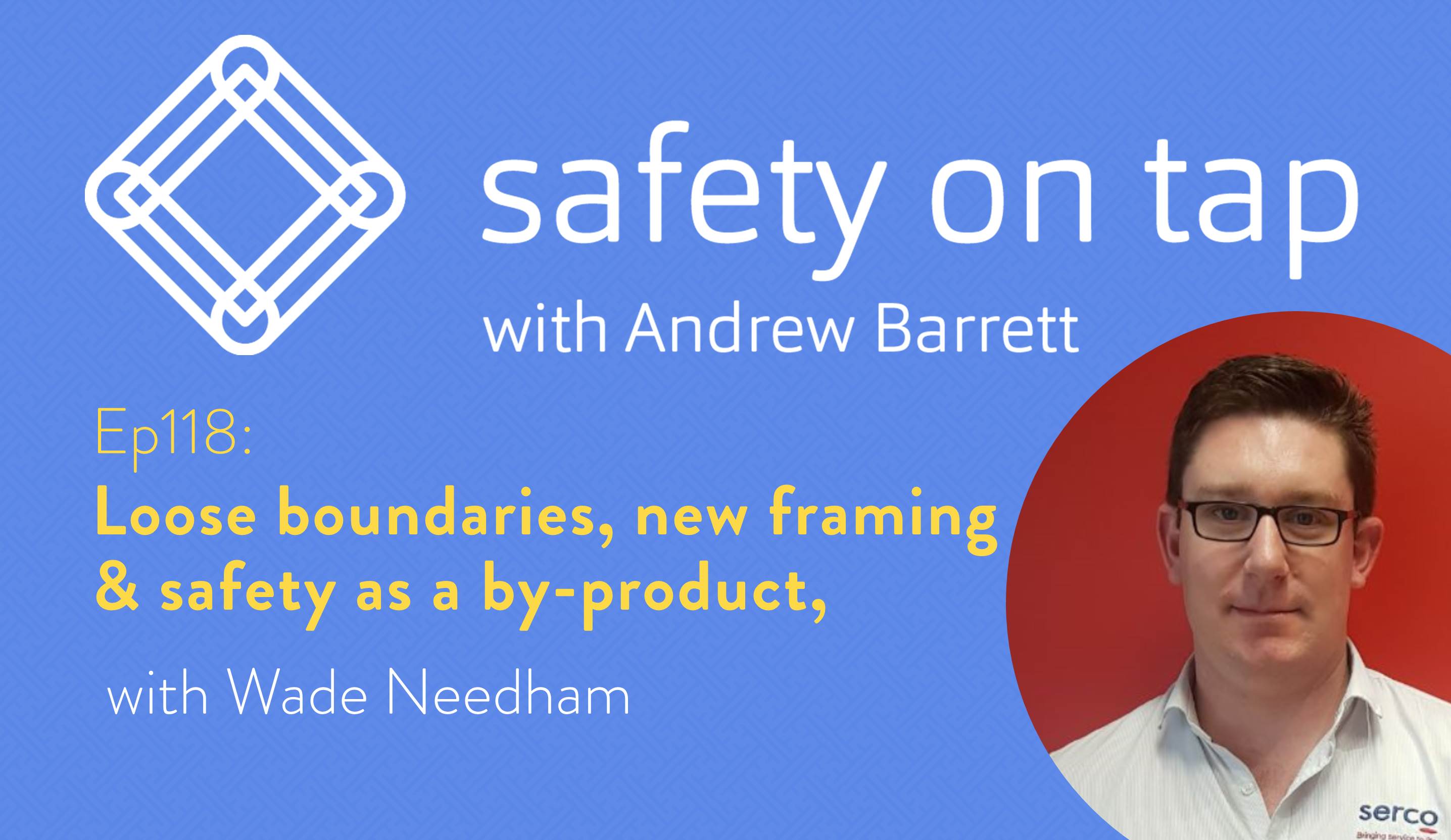Hey, it’s Andrew, and this is Safety on Tap.
Since you’re listening in, you must be a leader wanting to grow yourself and drastically improve health and safety along the way. Welcome to you, you’re in the right place. If this is your first time listening in, thanks for joining us and well done for trying something different to improve! And of course, welcome back to all of you wonderful regular listeners.
I’ve got some exciting news for you, but I know you come for the interviews. So I won’t hold that up, stick around after the conversation and I’ll tell you what I’m so excited about.
Today I catch up with a previous guest, Wade Needham, helping him scratch his own itch. That’ll make more sense in the first few minutes, and no, there was no actual scratching we did this all over zoom. Here’s Wade:
Before I get to the takeaways from this episode, I mentioned some exciting news. We all intuitively recognize that there are some less-than-effective things in our work, done in the name of health and safety. Whether we’ve created these ourselves, inherited them, or asked to do them by someone else – these things are safety clutter. And our workers know about safety clutter the best because they bear the brunt of it.
The trouble up until now is that we’ve had lots of triggers to add safety stuff, and nothing to confidently and defensibly take it away. To declutter. That’s changed. My previous guest and collaborator Dave Provan and I have released the world’s first, evidence-based, personalised and free Safety Clutter Scorecard. You can get a handle on the potential for safety clutter in your organisation, and what you can do about it. You’ll get your own report, which is a super valuable resource for you. Dave and previous guest Drew Rae are the original researchers whose work is the foundation of this scorecard, and you can get it for free, right now. Head over to safetyclutter.com to get your free, personalised report. That’s safetyclutter.com
Back to Wade. What he reinforced for me in this conversation, was principles. Yes, he talked about a bunch of practical changes in his role, his work, and examples of innovation we can all learn from. But the bigger take-aways were the principles, not the practices, as you might tell from the title of this podcast. So here are my three takeaways:
Takeaway #1: Loose boundaries: Boundaries are a function of capability when you focus on creating impact, bringing together the right people and capabilities to achieve it, then boundaries don’t really pose a challenge. Don’t get me wrong, boundaries exist with jobs and reporting lines and certain responsibilities – but Wade just treats them as loose, not recreating his role, he is simply clear and compelling about the impact he seeks to make, bringing together the people who can make it happen. This is the coalescing he talked about. And it’s not just internal stakeholders, he mentioned a number of external partners, providers, insurers, and I’ve seen a much longer list, of outside organizations he coalesces with goals to create specific kinds of impacts. How can you loosen up your boundaries to create greater impact?
Takeaway #2: New framing: Framing is an important thread through this conversation. Framing our roles, framing the problem, framing opportunity as much as the problem, framing using your language or their language, framing internal and external customers, up and down the org chart. Wade mentioned new entrants to markets changing the frame for customers and their needs, compared to incumbents. That’s the definition of disruption, it’s partly an outcome of reframing. How do you frame your role, your capability, how you operate in your organisation and the people you seek to serve? How could you challenge your framing to see if you get different ideas and results?
Takeaway #3: Safety as a by-product: You might think of this one as a specific kind of re-framing. But it’s worth a little extra attention. How do you, and how do others in your business, frame health, and safety? Is it obvious, visible controls? Is it processes? Is it a risk? Is it things going wrong? I think we see an absence of safety as a by-product of a poor system of work, but we don’t equally entertain the idea of a great system of work creating lots of outcomes, safety being one of them. That’s my general feeling from the people I speak with. Entertaining the idea that health and safety can emerge, ensures we are digging into the heart of how work is planned and done, not playing on the edges. Entertaining safety as an outcome also challenges our traditional ‘this-result-in-that’ logic. The lady who quit smoking wasn’t the intended outcome, but if you aren’t open to seeing safety as a by-product of something bigger, then you might just miss out on the impacts you might, and do, create.
Here’s your FREE reflection worksheet from this episode.
And here’s your FREE download of the full transcript of this episode.
Feel free to share this with your team/colleagues!

